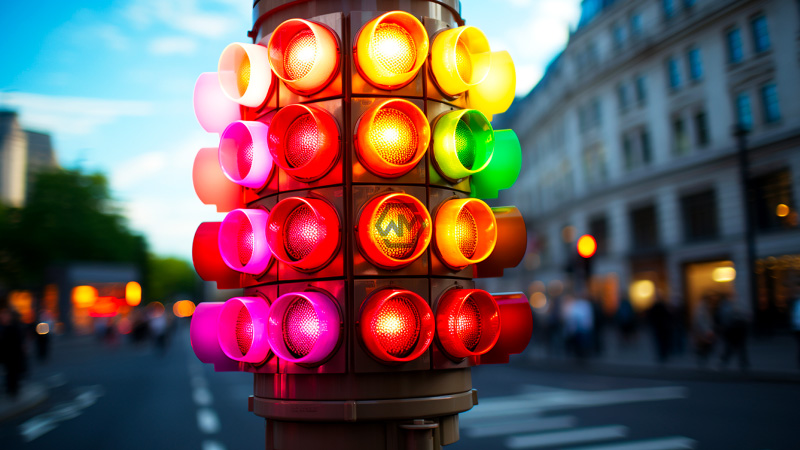- The traffic signal establishment highlighted a support point with a top segment looking like a cross.
- It had semaphore flagging arms, which went all over to teach traffic to move or stop, and red or green gas lights.
- Hajbabaie told The Related Press news organization that he proposes adding another light – potentially a white one.
The generally realized traffic signal has not encountered a critical overhaul in very nearly 100 years, since William Pott, a Detroit cop, made the initial three-segment traffic signal in the US in 1921. Presently, say specialists, the ascent of driverless vehicles implies that another arrangement of well-being rules is expected to guarantee they collaborate accurately with traffic lights.
Traffic signals all over the planet commonly utilize red, golden, and green lights to motion toward drivers whether they ought to stop, go, or prepare to one or the other stop or go at convergences and person-on-foot intersections. Ali Hajbabaie, a North Carolina State College (NCSU) design teacher, is driving a group to plan a traffic framework that thinks about how driverless vehicles answer traffic lights.
New Colour in a Traffic Lights
Traffic lights are about something other than wellbeing. They empower better traffic stream, prompting less clog, and can likewise be gainful to the economy when individuals burn through less time and fuel on the streets.
As per the 2022 Worldwide Traffic Scorecard by INRIX, an organization that makes items and administrations connected with the vehicle business and independent vehicles, the joined expense for the economy of street clog in the Unified Realm, Germany and the US was $2.2bn. Traffic signals make a critical commitment to holding this expense down.
The world’s most memorable traffic signal was introduced on Parliament Square, inverse the Places of Parliament in London, UK, on December 10, 1868.
The developing blockage of pony-drawn carriages at that particular crossing point was making it progressively hazardous for walkers nearby.



